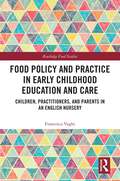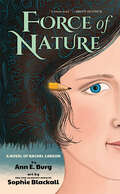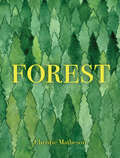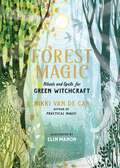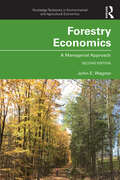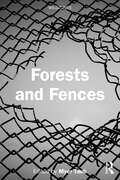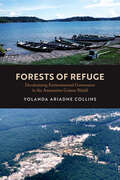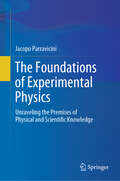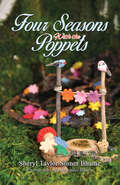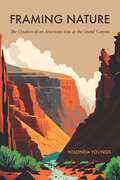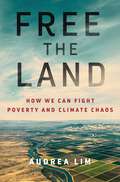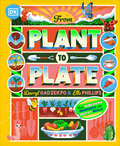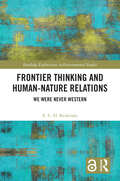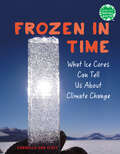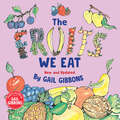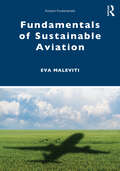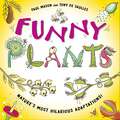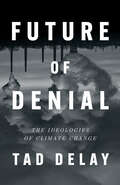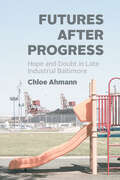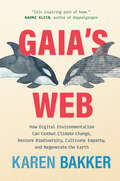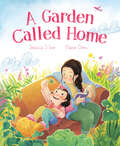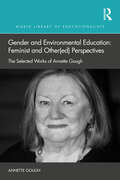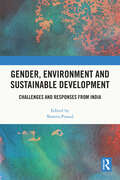- Table View
- List View
Food Policy and Practice in Early Childhood Education and Care: Children, Practitioners, and Parents in an English Nursery (Routledge Food Studies)
by Francesca VaghiThis book is about food and feeding in early childhood education and care, offering an exploration of the intersection of children’s food, education, family intervention, and public health policies. The notion of ‘good’ food for children is often communicated as a matter of common sense by policymakers and public health authorities; yet the social, material, and practical aspects of feeding children are far from straightforward. Drawing on a detailed ethnographic study conducted in a London nursery and children’s centre, this book provides a close examination of the practices of childcare practitioners, children, and parents, asking how the universalism of policy and bureaucracy fits with the particularism of feeding and eating in the early years. Looking at the unintended consequences that emerged in the field, such as contradictory public health messaging and arbitrary policy interventions, the book reveals the harmful assumptions about disadvantaged groups that are perpetuated in policy discourse, and challenges the constructs of individual choice and responsibility as main determinants of health. Children’s food practices at the nursery are examined to explore the notion that, whilst for adults it is what children eat that often matters most, to children it is how they eat that is more important. This book contributes to a growing body of literature evidencing how children’s food is a contested domain, in which power relations are continuously negotiated. This raises questions not only on how children can be included in policy beyond a tokenistic involvement but also on what children’s well-being might mean beyond the biomedical sphere. The book will particularly appeal to students and scholars in food and health, food policy, childhood studies, and medical anthropology. Policymakers and non-governmental bodies working in the domains of children’s food and early years policies will also find this book of interest.
Force of Nature: A Novel of Rachel Carson
by Ann E. BurgA beautiful and hopeful story of how a young impassioned naturalist grows up to change the world. For everyone who cares about our fragile planet."An absolute joy to read." -Book Riot"Gracefully written...pleasing to the eye and ear." -Kirkus ReviewsRachel was a girl who lovedscience and the sea,books and writingand all the creatures of the world.Rachel was quiet,a listener by nature.But when she saw problems,she could not remain silent.Some people thought girlsshouldn't be scientists.They thought girlsshouldn't use their voicesto question or challenge,even to protectall the creatures of the world.Luckily Rachel didn't listento them.
Forest
by Christie MathesonA simple introduction to the beauty of forests and the vibrant life within them, from the award-winning author of the acclaimed interactive picture book Tap the Magic Tree.This beautifully illustrated nonfiction children’s picture book begins with a view of the forest at a distance, then zooms in on its fascinating details, including the amazing trees, bright birds, adorable baby animals, and other wonders of nature that inhabit it. The rhythmic text and inviting watercolor illustrations allow curious young readers to observe, explore, and learn what makes forests so special and vitally important.An engaging read-aloud that invites questions and conversation, Forest offers an intriguing introduction to the natural world and encourages little ones to develop a connection with the great outdoors that can last a lifetime. Perfect for any time of year and a beautiful way to celebrate spring, Earth Day, Mother’s Day, or the arrival of a new baby, this endlessly delightful children's nature book includes additional information about forests and what we can do to care for them.
Forest Magic: Rituals and Spells for Green Witchcraft
by Nikki Van De CarConnect to the enchanted mystery of trees, plants, and forests as you engage in green witchcraft, rituals, spell work, and seasonal magic crafted by the bestselling author of Practical Magic, Nikki Van De Car.&“The clear instructions and inventive ritual interpretations are suffused with the author&’s genuine and infectious wonder at the natural world…an ideal gift for the pagan-curious.&” — Publisher's WeeklyForest Magic is a guide to befriending the mysterious and wise guardians of our woodlands. Ancient and wise, trees and plants watch over us—sheltering us and guiding us. At the same time, it is our calling to cherish and honor them, as we work together in eternal reciprocity. Humans have always lived in mutual communion with the forest, dwelling in its shadowy depths, tending to it as it protects us, trading oxygen for carbon dioxide, again and again, with each day, each hour of sunlight, each breath. It is a sacred—magical—exchange that we can honor with rituals, spell work, and intention. Readers will explore the magic of the forest first by learning to create their own sacred grove, whether they live deep within nature or in the very center of a city. From there, Forest Magic explores the year in two parts—The Oak King, for the first half of the year, and The Holly King, for the second half. Each section explores pagan holidays and celebrations associated with nature's rhythms, rituals and practices for communing with and tending to the plants that thrive during these times, discussion of the magical properties associated with each tree and shrub, and plant-based healing. Dozens of gorgeous, full-color illustrations accompany this inspiring, accessible guide to becoming one with the magic and mystery of trees.
Forestry Economics: A Managerial Approach (Routledge Textbooks in Environmental and Agricultural Economics)
by John E. Wagner- Each chapter introduces one or more key concepts in managerial economics and then illustrates the importance of those ideas by showing how they can be applied when making business decisions.- The inclusion of numerous case studies throughout the book enables students to see how forestry and natural resource management works in practice.- A new chapter on developing and writing business plans highlights a managerial tool and allows students to put the ideas developed throughout the book into practice.
Forests and Fences (WildZones)
by Myer TaubThis book examines critical themes in environmental studies though theatre and performance studies. It experiments with forms along with the practice of praxis to provide radical frameworks for resilience in the contemporary age of crisis. Drawing on Ravi Sundaram’s concept of “Wild Zones”, it explores the kinetic overflows in informal sites, but also in the intimate spaces that have been realigned or shocked or fenced in, especially in the context of the COVID-19 pandemic.This volume will be of great interest to scholars and researchers of theatre and performance studies, environment and sustainability, and environmental humanities.
Forests of Refuge: Decolonizing Environmental Governance in the Amazonian Guiana Shield
by Dr. Yolanda Ariadne CollinsForests of Refuge questions the effectiveness of market-based policies that govern forests in the interest of mitigating climate change. Yolanda Ariadne Collins interrogates the most ambitious global plan to incentivize people away from deforesting activities: the United Nations–endorsed Reducing Emissions from Deforestation and Forest Degradation (REDD+) initiative. Forests of Refuge explores REDD+ in Guyana and neighboring Suriname, two highly forested countries in the Amazonian Guiana Shield with low deforestation rates. Yet REDD+ implementation there has been fraught with challenges. Adopting a multisited ethnographic approach, Forests of Refuge takes readers into the halls of policymaking, into conservation development organizations, and into forest-dependent communities most affected by environmental policies and exploitative colonial histories. This book situates these challenges in the inattentiveness of global environmental policies to roughly five hundred years of colonial histories that positioned the forests as places of refuge and resistance. It advocates that the fruits of these oppressive histories be reckoned with through processes of decolonization.
The Foundations of Experimental Physics: Unraveling the Premises of Physical and Scientific Knowledge
by Jacopo ParraviciniStandard STEM courses, for all of their value, do not tend to include systematic lectures or treatment about the nature of the scientific method. This book aims to provide a wide reflection on the general principles of physics and explore the foundations of scientific knowledge as a whole. The author delves into the study of what lies at the basis of science in general, and physics in particular. Themes such as the relation between natural phenomena and mathematical language are addressed, highlighting the main hubs of conceptual development in science. The volume also examines the conceptual and practical instruments that have been progressively developed to investigate the nature of physics. Furthermore, the author discusses the importance of “scientific practice” within the scientific community, emphasizing its role in advancing knowledge and how it contributes to physics as a whole. Divided into three parts, each covering different aspects of physics and its foundations, the text, while assuming basic knowledge of physics and mathematics taught in university courses, is accessible to all STEM students, and will be useful for anyone looking to gain valuable insights into the nature of physics and the methods used to acquire knowledge in this field.
Four Seasons with the Poppets
by Sheryl Taylor Sinner BhameAs with any enduring fairy tale, children will want to listen to Four Seasons with the Poppets again and again, to revisit the charming world of the Poppets. The seasonal stories speak to a child’s senses, describing picturesque scenes. In spring, how pretty the forest looked when the flowers were in bloom; in summer, the animals would come visit to hear Margie’s and Millie’s songs; in fall, gathering pine cones for Mother Poppet’s fires; in winter, ‘The roasted acorn smelled just like Christmas dinner should smell.’ Throughout the story are life lessons: appreciation for and conservation of the world around them, inclusion and encouragement of others, teamwork, and neighbourliness. Children are comforted, learning about the continuity of the seasons. “When Father Poppet saw how the sun made the frozen creek look like a sparkling white path, he decided to whittle ice skates for the children next spring, out of soft green wood, that would dry and harden in time for Christmas next winter.” When children use their imagination, it develops their ability to problem solve.
Framing Nature: The Creation of an American Icon at the Grand Canyon (America’s Public Lands)
by Yolonda YoungsThe Grand Canyon of the Colorado River is an internationally known feature of the North American landscape, attracting more than five million visitors each year. A deep cultural, visual, and social history has shaped the Grand Canyon&’s environment into one of America&’s most significant representations of nature. Yet the canyon is more than a vacation destination, a movie backdrop, or a scenic viewpoint; it is a real place as well as an abstraction easily summoned in the minds of Americans. The Grand Canyon, or the idea of it, is woven into the fabric of American cultural identity and serves as a cultural reference point—an icon. In Framing Nature Yolonda Youngs traces the idea of the Grand Canyon as an icon and the ways people came to know it through popular imagery and visual media. She analyzes and interprets more than fourteen hundred visual artifacts, including postcards, maps, magazine illustrations, and photographs of the Grand Canyon, supplemented with the words and ideas of writers, artists, explorers, and other media makers from 1869 to 2022. Youngs considers the manipulation and commodification of visual representations and shifting ideas, values, and meanings of nature, exploring the interplay between humans and their environments and how visual representations shape popular ideas and meanings about national parks and the American West. Framing Nature provides a novel interpretation of how places, especially national parks, are transformed into national and environmental symbols.
Free the Land: How We Can Fight Poverty and Climate Chaos
by Audrea LimAn eye-opening examination of how treating land as a source of profit has a massive impact on racial inequality and the housing, gentrification, and environmental crises.Climate change, gentrification, racial inequity, and corporate greed are some of the most urgent problems facing our society. They are traditionally treated as unrelated issues, but they all share a common root: the commodification of land. Environmental journalist Audrea Lim began to notice these connections a decade ago when she reported on the Native communities leading the fight against oil mining on their lands in the Canadian tar sands near her hometown of Calgary, but before long, she saw the essential role of land commodification and private ownership everywhere she looked: in foreclosure-racked suburbs and gentrifying cities like New York City; among poor, small farmers struggling to keep their businesses afloat; and in low-income communities attempting to resist mines and industrial development on their lands, only to find that their voices counted less than those of shareholders living thousands of miles away.Free The Land is a captivating and beautifully rendered look at the ways that our relationship to the land is the core cause of the most pressing justice issues in North America. Lim expertly weaves together seemingly disparate themes into a unified theory of social justice, describes how the land ownership system developed over the centuries, and presents original reporting from a wide range of activists and policy makers to illustrate the profound impact it continues to have on our society today.Ultimately, this book offers a message of hope: by approaching these socioeconomic issues holistically, we can begin to imagine just alternatives to fossil-fueled capitalism, new ways to build community, and a more sustainable, equitable world.
From Plant to Plate: Turn Home-Grown Ingredients Into Healthy Meals!
by Darryl Gadzekpo Ella PhillipsGrow mighty ingredients, then take them from mud kitchen to real kitchen and transform them into delicious, plant-powered feasts.Grab your shovel and plant for a recipe! Discover 15 incredible plants, including zucchini, raspberries, corn, and basil, then find out what it takes to make them grow. From showing you how seeds should be properly planted to helping you find the best soil for your plants, Darryl Gadzekpo and Ella Phillips offer all the tips and tricks green-fingered kids need to know to transform seeds into mighty fruit, vegetables, and herbs your tummies would be proud of.But the fun doesn't end here! Once you've removed those muddy boots, head to the kitchen and learn how to prepare and cook your home-grown ingredients. With more than 25 tasty recipe ideas from basil pesto pasta to butternut squash muffins, you'll master a variety of unique plant-powered food that you'll love to eat as much as you love to cook.A visual feast for 7–9-year-olds, From Plant to Plate is the perfect book to inspire kids to get growing, get cooking, and get plant-powered eating.
Frontier Thinking and Human-Nature Relations: We Were Never Western (Routledge Explorations in Environmental Studies)
by E. C. KeskitaloCombining historical, social and regulative analysis, this book builds a compelling critique of ‘frontier thinking’ as it continues to form our assumptions about social and environmental organisation – in ways that impact not least the present environmental crisis.This book systematically identifies the ways in which images of nature and society are formed by the historically developed frontier-oriented narratives which have underpinned much Anglo-American and Anglocentric thought. The book confronts these conceptions at large, showing that they never held empirically, and contrasts them with the situation in northern Europe, where diverging assumptions are integral to this day. Through this juxtaposition, this book illustrates not only the pervasiveness of structures of understanding in steering policy but also the varying traditions regarding how understandings of the environment can be formed.This study highlights how historical thought patterns, formed for very different reasons than exist today, continue to shape our assumptions about nature, the relation between urban and rural areas and our understanding of ourselves in relation to the environment. This book will be of wide interest to a range of academics and students in the fields of geography, anthropology, environmental studies, sociology, political science and development studies, amongst others.
Frozen in Time: What Ice Cores Can Tell Us About Climate Change (Books for a Better Earth)
by Carmella Van VleetA dazzling introduction to paleoclimatology for kids, connecting the methods that scientists use to study our climate history with future climate change solutions.Believe it or not, ice isn&’t always just frozen water. In fact, most of the ice covering our planet contains thousands of years' worth of information about our atmosphere. This ice is made up of a lot more than snow—it has soot, volcanic ash, gasses, and other substances that affect the climate. And if we drill a piece of that ice? We get a frozen time capsule, courtesy of Earth. In this exhilarating middle grade nonfiction book by a former educator, kids are immersed in the field of paleoclimatology. Readers go along on an ice core expedition, run through each step in the collecting and transporting process, review the fascinating components of an ice core, and explore the specialized labs where scientists examine them.But these pieces of our planet are more than just cool records. By preserving and studying these frosty collections of climate history, we can learn from previous patterns and better protect our planet in the future. The final chapter focuses on ice as a key tool in the fight against climate change.With crystal-clear explanations and an engaging, kid friendly tone, the book features 15+ full-color photographs, diagrams, interviews with paleoclimatologists, a glossary of terms, and simple experiments for budding scientists at home. Books for a Better Earth are designed to inspire children to become active, knowledgeable participants in caring for the planet they live on.A Junior Library Guild Gold Standard Selection
The Fruits We Eat (New & Updated)
by Gail GibbonsFrom #1 science writer for kids Gail Gibbons, learn everything about the delicious fruits you eat with this new and updated edition.Berries, apples, melons, and grapes; oranges, grapefruits, bananas -- yum! This scrumptious, updated picture book, a companion to The Vegetables We Eat, offers youngsters an inviting, information-packed cornucopia of favorite fruits.Gail Gibbons combines a clear, simple text with her signature illustrations to present fruit facts galore: the parts of fruits, where and how they grow, harvesting, processing, where to buy them, and how to enjoy them as part of a healthy diet.
Fundamentals of Sustainable Aviation (Aviation Fundamentals)
by Eva MalevitiFundamentals of Sustainable Aviation is the first textbook to survey the critical field of sustainability within the aviation industry. Taking a systems thinking approach, it presents the foundational principles of sustainability and methodically applies them to different aviation sectors. Opening with the basics of sustainability, emphasising the Sustainable Development Goals, the book then considers the environmental, economic and social dimensions of aviation. The following chapters apply these insights to aviation design, supply chains, operations, maintenance and facilities. The final chapter examines the concept of resilience in sustainable aviation. Overall, the textbook shows how future sustainability can be achieved by making better decisions today. Students are supported with international case studies throughout the book. Slides, test questions and a teaching manual are available for instructors. This textbook is the ideal resource for courses on sustainable aviation globally and will also be of great interest to professionals in the field.
Fundamentals of Sustainable Aviation (ISSN)
by Eva MalevitiFundamentals of Sustainable Aviation is the first textbook to survey the critical field of sustainability within the aviation industry. Taking a systems thinking approach, it presents the foundational principles of sustainability and methodically applies them to different aviation sectors.Opening with the basics of sustainability, emphasising the Sustainable Development Goals, the book then considers the environmental, economic and social dimensions of aviation. The following chapters apply these insights to aviation design, supply chains, operations, maintenance and facilities. The final chapter examines the concept of resilience in sustainable aviation. Overall, the textbook shows how future sustainability can be achieved by making better decisions today.Students are supported with international case studies throughout the book. Slides, test questions and a teaching manual are available for instructors. This textbook is the ideal resource for courses on sustainable aviation globally and will also be of great interest to professionals in the field.
Funny Plants: Laugh-out-loud nature facts! (Funny Nature #3)
by Paul MasonHeaps of funny facts and cartoons about the plant world's most hilarious adaptations!Plants have developed some downright strange features and behaviours to survive day in and day out. This book's lively artwork and side-splitting jokes uncover the awesome science of the plant world. Meet the stickiest, the stinkiest, the trickiest and of course the absolutely funniest plants on planet Earth!Funny Nature is a series of books presenting science learning through laughter. Brought to you by the author and illustrator of The Poo That Animals Do, this series covers science topics including evolution, adaptation, habitats, anatomy, physiology, life cycles and much more! Perfect for fans of facts and fun aged 6+.Books in the Funny Nature series:Funny BeastsFunny BugsFunny DinosaursFunny Plants
Future of Denial: The Ideologies of Climate Change
by Tad DeLay"Tad DeLay is one of the most important and disquieting theorists of consciousness and politics writing today. His work is indispensable."—China Miéville, author of OctoberCapitalism is an ecocidal engine constantly regenerating climate change denialThe age of denial is over, we are told. Yet emissions continue to rise while gimmicks, graft, and green- washing distract the public from the climate violence suffered by the vulnerable. This timely, interdisciplinary contribution to the environmental humanities draws on the latest climatology, the first shoots of an energy transition, critical theory, Earth&’s paleoclimate history, and trends in border violence to answer the most pressing question of our age: Why do we continue to squander the short time we have left?The symptoms suggest society&’s inability to adjust is profound. Near Portland, militias incapable of accepting that the world is warming respond to a wildfire by hunting for imaginary left-wing arsonists. Europe erects nets in the Aegean Sea to capture migrants fleeing drought and war. An airline claims to be carbon neutral thanks to bogus cheap offsets. Drone strikes hit people living along the aridity line. Yes, Exxon knew as early as the 1970s, but the fundamental physics of carbon dioxide warming the Earth was already understood before the American Civil War.Will capitalists ever voluntarily walk away from hundreds of trillions of dollars in fossil fuels unless they are forced to do so? And, if not, who will apply the necessary pressure?
Futures after Progress: Hope and Doubt in Late Industrial Baltimore
by Chloe AhmannA powerful ethnographic study of South Baltimore, a place haunted by toxic pasts in its pursuit of better futures. Factory fires, chemical explosions, and aerial pollutants have inexorably shaped South Baltimore into one of the most polluted places in the country. In Futures after Progress, anthropologist Chloe Ahmann explores the rise and fall of industrial lifeways on this edge of the city and the uncertainties that linger in their wake. Writing from the community of Curtis Bay, where two hundred years of technocratic hubris have carried lethal costs, Ahmann also follows local efforts to realize a good future after industry and the rifts competing visions opened between neighbors. Examining tensions between White and Black residents, environmental activists and industrial enthusiasts, local elders and younger generations, Ahmann shows how this community has become a battleground for competing political futures whose stakes reverberate beyond its six square miles in a present after progress has lost steam. And yet—as one young resident explains—“that’s not how the story ends.” Rigorous and moving, Futures after Progress probes the deep roots of our ecological predicament, offering insight into what lies ahead for a country beset by dreams deferred and a planet on the precipice of change.
Gaia's Web: How Digital Environmentalism Can Combat Climate Change, Restore Biodiversity, Cultivate Empathy, and Regenerate the Earth
by Karen BakkerA riveting exploration of one of the most important dilemmas of our time: will digital technology accelerate environmental degradation, or could it play a role in ecological regeneration?At the uncanny edge of the scientific frontier, Gaia&’s Web explores the promise and pitfalls the Digital Age holds for the future of our planet. Instead of the Internet of Things, environmental scientist and tech entrepreneur Karen Bakker asks, why not consider the Internet of Living Things? At the surprising and inspiring confluence of our digital and ecological futures, Bakker explores how the tools of the Digital Age could be mobilized to address our most pressing environmental challenges, from climate change to biodiversity loss. Interspersed with ten elegiac, enigmatic parables, each of which is based on an existing technology, Gaia&’s Web evokes the conundrums we face as the World Wide Web intertwines with the Web of Life.A new generation of innovators is deploying digital technology to come to the aid of the planet, using spy satellites to track down environmental criminals, inviting animals to the Metaverse, and biohacking Frankenstein-like biobots as environmental sentinels. But will they end up doing more harm than good? In an engaging take on conservation technology, Bakker looks at the digital tech applications to environmental issues from predatory harvesting of environmental data to human bycatch and eco-surveillance capitalism. If we address these issues and mobilize digitally mediated forms of citizen science, she argues, digital tech could help reverse environmental harms and advance environmental sustainability. And in the process, Big Tech might be transformed for the better.With its uniquely broad scope—combining insights from computer science, ecology, engineering, environmental science, and environmental law—Gaia&’s Web introduces profoundly novel ways of addressing our most pressing environmental challenges—mitigating climate change, protecting endangered species—and creating new possibilities for ecological justice by empowering nonhumans to participate in environmental regulation.
The Garden Against Time: In Search of a Common Paradise
by Olivia LaingAn Oprah Daily Summer Reading Recommendation • Named one of the most anticipated books of 2024 by the BBC, The Observer, Irish Times, The Guardian, and The Millions. Inspired by the restoration of her own garden, "imaginative and empathetic critic" (NPR) Olivia Laing embarks on an exhilarating investigation of paradise. In 2020, Olivia Laing began to restore an eighteenth-century walled garden in Suffolk, an overgrown Eden of unusual plants. The work brought to light a crucial question for our age: Who gets to live in paradise, and how can we share it while there’s still time? Moving between real and imagined gardens, from Milton’s Paradise Lost to John Clare’s enclosure elegies, from a wartime sanctuary in Italy to a grotesque aristocratic pleasure ground funded by slavery, Laing interrogates the sometimes shocking cost of making paradise on earth. But the story of the garden doesn’t always enact larger patterns of privilege and exclusion. It’s also a place of rebel outposts and communal dreams. From the improbable queer utopia conjured by Derek Jarman on the beach at Dungeness to the fertile vision of a common Eden propagated by William Morris, new modes of living can and have been attempted amidst the flower beds, experiments that could prove vital in the coming era of climate change. The result is a humming, glowing tapestry, a beautiful and exacting account of the abundant pleasures and possibilities of gardens: not as a place to hide from the world but as a site of encounter and discovery, bee-loud and pollen-laden.
A Garden Called Home
by Jessica J. LeeWhat makes the place we live feel like home? This is a warm-hearted and lush picture book about family, the immigrant experience and how a simple garden can foster a connection to the larger natural world.Mama was born in a country far away from here. I love her stories about warm rain in winter and green mountains. And now Mama's taking me there! When a young girl and her mother go to visit her family, the girl notices a change. At home, her mother mostly stays inside. Here, her mother likes to explore and go hiking. The girl has never seen her so happy! Her mother tells her about the trees, bushes, flowers and birds. Did you know that tree roots make mountains strong? And that ài hāo (mugwort) is used to make delicious, sweet dumplings?But her mother's smile goes away when they return home. It's cold and she doesn't want to go outside. She goes back to wearing her big quilted jackets and watering her houseplants.How can the girl show her mother that nature here can be wondrous too?Includes a glossary of plants with Mandarin/English words.
Gender and Environmental Education: The Selected Works of Annette Gough (World Library of Educationalists)
by Annette GoughThis timely book provides a starting point for critical analysis and discourse about the status of gendered perspectives in environmental education research.Through bringing together selected writings of Annette Gough, it documents the evolving discussions of gender in environmental education research since the mid-1990s, from its origins in putting women on the agenda through to women’s relationships with nature and ecofeminism, as well as writings that engage with queer theory, intersectionality, assemblages, new materialisms, posthumanism and the more-than-human. The book is both a collection of Annette Gough, and her collaborators, writings around these themes and her reflections on the transitions that have occurred in the field of environmental education related to gender since the late 1980s, as well as her deliberations on future directions.An important new addition to the World Library of Educationalists, this book foregrounds women, their environmental perspectives, and feminist and other gendered research, which have been marginalised for too long in environmental education.
Gender, Environment and Sustainable Development: Challenges and Responses from India
by Shweta PrasadThis book studies environment and sustainable development from the perspective of gender. It focuses on three major themes, including sustainability of development practices, policy perspectives on environmental management and climate change and its gendered impact. It includes contributions from academicians working across disciplines and practitioners working at the grassroots levels. The book addresses issues facing India amid a growing global environmental crisis and suggests policy measures for environmental protection and to improve the quality of life of its inhabitants. Lucid and topical, the volume will be an indispensable resource for students, researchers of gender, environment and sustainable development, sociology and public policy. It will also be a great resource for advocacy groups, non-governmental organisations (NGOs) and policymakers working in the area.
